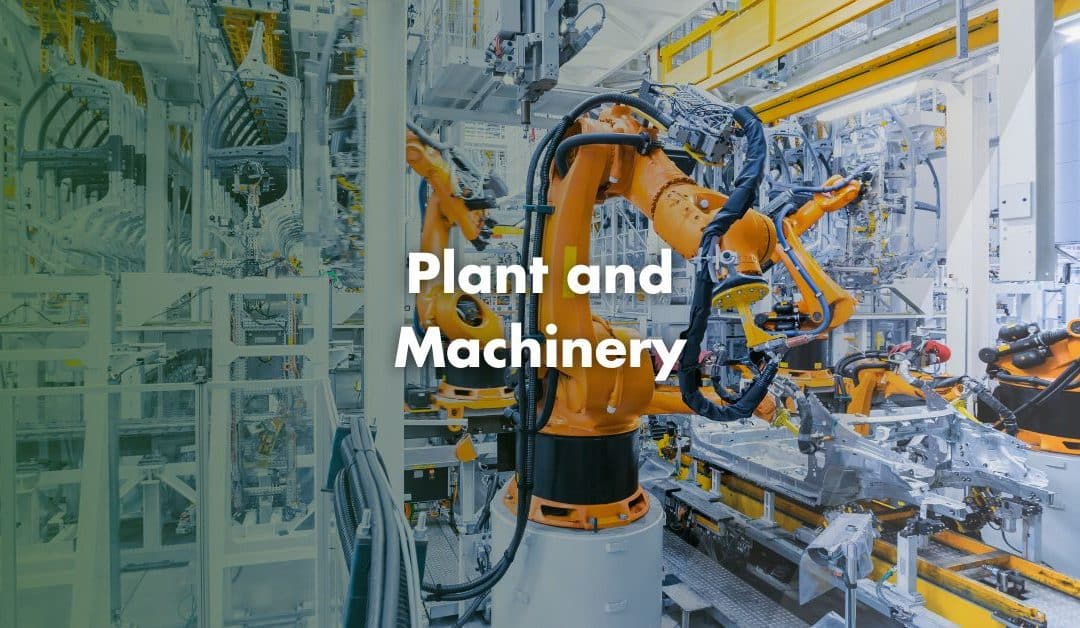In simple terms, “Plant and Machinery” refer to the essential tools, equipment and systems that a business needs to keep running smoothly. These assets are not just helpful for daily operations, they also offer businesses the opportunity to claim tax relief through Capital Allowances.
What Does “Plant and Machinery” Mean?
Plant and Machinery includes the physical items a businesses uses to support its day-to-day activities. These items are not products the business sells, nor are they part of the building itself, such as walls or floors. Instead, they are assets businesses use to help deliver its services or produce goods.
Items can range from computers and furniture to industrial machines and company vehicles. Even fitted features, such as kitchen units or heating systems, might count. Importantly, these assets may qualify for Capital Allowances, which allow you to reduce your taxable income based on their purchase costs.
Common Examples of Plant and Machinery
While there is no definitive list, HMRC provides several examples that businesses frequently claim for. These include:
- Company vehicles such as cars, lorries and vans
- Office equipment such as desks, chairs and filing cabinets
- Machinery such as drills, cranes, compressors and other tools
- IT equipment such as servers and computers
- Refrigeration units and cooling systems
- Solar panels and electric vehicle charge points
- Equipment used in manufacturing and engineering, such as foundry tools
This broad classification means that many industries and business types (retail, digital, construction, logistics) can own assets that fall under Plant and Machinery.
What are Integral Features?
Some features that are permanently attached to a building can also be claimed under Plant and Machinery. These are “Integral Features”. Although they form part of the premises, they play a direct role in helping the business operate.
Examples of integral features include:
- Lifts, escalators and moving walkways
- Space and water heating systems
- Air-conditioning and air-cooling systems
- Hot and cold water systems (excluding toilets and kitchen sinks)
- Lighting systems and other electrical installations
- External solar shading
If you spend money to install or upgrade these systems, the costs may be eligible for Capital Expenditure claims.
What are Fixtures?
“Fixtures” differ slightly from integral features. These are items attached to the building but not essential to its structure. Businesses can still claimed Fixtures as Plant and Machinery if they serve a specific function in the business.
Examples of fixtures include:
- Fitted kitchen units used in staff areas
- Bathroom suites, particularly in customer or employee areas
- CCTV systems and fire alarm networks
Though part of the building, these serve operational purposes and may qualify for Capital Allowances.
Plant vs Machinery
The terms “Plant” and “Machinery” are often grouped together, but they are not identical. Machinery generally refers to items with moving parts or those performing mechanical tasks. For instance:
- Engines
- Conveyer belts
- Automated manufacturing tools
Plan is broader and includes installations or tools that support business functions, even if they do not move. Items like server racks, refrigeration cabinets and storage units can be classified as Plant.
What Does Not Count as Plant and Machinery?
Not all assets qualify. Generally, the following items do not count:
- Buildings or building parts, such as walls, roofs and floors
- Land or property
- Landscaping and groundwork (unless part of installing Plant)
Exceptions exist when costs are directly related to installing qualifying equipment. For example: Adapting a building to house a machine may be claimable.
Interdependence of Plant and Machinery
While Plant and Machinery serve different functions, they are often interconnected. Machinery relies on plant installations, such as power systems or ventilation, to operate efficiently. Likewise, Plant systems are designed to support Machinery use.
For example: A production line may use conveyor belts (Machinery) powered by a heating or ventilation system (Plant).
Capital Allowances and Tax Relief
Capital Allowances let businesses deduct the cost of qualifying assets from their taxable profits. This reduces Corporation Tax liability and encourages investment.
Between April 2021 and March 2023, there were temporarily available reliefs:
- A 130% Super-Deduction on qualifying new Plant and Machinery (no longer available)
- A 50% First-Year Allowance on special rate assets
Although these enhanced reliefs have ended, standard Capital Allowances still offer valuable tax-saving opportunities.
Contact Us
We are not just accountants; we are Chartered Accountants with one of the most reputable and premium accounting bodies. We are registered and regulated by ACCA; so you can rest assured that you are in good hands. Knowing this, don’t hesitate to get in touch with us if you require assistance: Pi Accountancy | Contact Us
This article is for general informational purposes only and does not constitute legal or financial advice. While we aim to keep our content up to date and accurate, UK tax laws and regulations are subject to change. Please speak to an accountant or tax professional for advice tailored to your individual circumstances. Pi Accountancy accepts no responsibility for any issues arising from reliance on the information provided.

